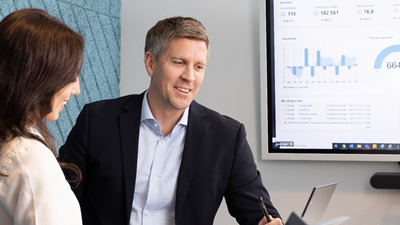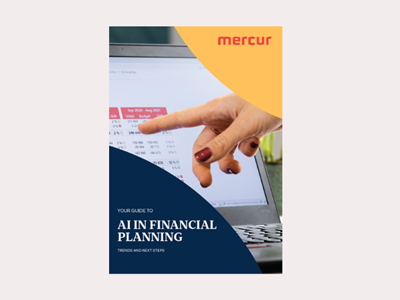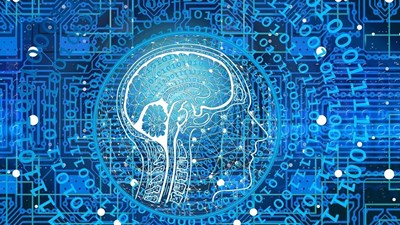
What Is FP&A? Definition, Purpose, and Best Practices
Without solid financial planning and analysis (FP&A), businesses operate in the dark. Budget decisions are made on gut feel, forecasts are unreliable and leadership lacks the financial insight to make confident calls. This is the gap that FP&A fills.
By analysing historical data, building forecasts and creating financial plans, FP&A gives companies a clearer view of where they’re headed and how to get there. Led by the CFO, FP&A complements traditional accounting by looking forward, not just back, and helps shape smarter, faster business decisions.
Below, we go deeper into the process of FP&A and why it’s important for businesses.
What Is FP&A?
Financial planning and analysis (FP&A) is a vital finance function responsible for the budgeting, forecasting, reporting and analysis processes of a business. With FP&A, businesses turn raw data into insights, helping them create informed, actionable plans to achieve their goals.
FP&A specialists own the budgeting and forecasting process and act as business partners across the organisation. They collect and validate data from all units, build financial models and prepare management reports so that executives have the information they need to develop the strategy.
What Is the Difference Between FP&A and Accounting?
A person might confuse accounting with FP&A because both are core financial functions and deal with financial data. However, they serve different purposes and focus on different timeframes.
Unlike accounting, which focuses on documenting past financial performance, FP&A is forward-looking and interpretative: its focus is on why results occurred and what is likely to happen next.
Now that the definition is clear, let’s look at the processes that comprise FP&A.
The Building Blocks of FP&A
Let’s take a look at the main processes supporting financial planning and analysis:
Budgeting and Forecasting
Budgeting outlines a company’s financial plan for an upcoming period (typically a year or quarter), allocating revenues and expenditures across various departments. Forecasting is the ongoing process of updating those plans as new information arrives.
Companies often build driver-based budgets (e.g., basing sales or expenses on underlying business drivers) and then update those figures regularly through rolling forecasts. Larger enterprises may extend forecasts 1-3 years into the future, and many now shift to continuous planning (updating forecasts monthly or quarterly rather than just once a year).
Management Reporting and Performance Analysis
Once budgets and forecasts are in place, the FP&A team produces regular reports and performs analysis to explain performance.
Common management reports include profit and loss statements, balance sheets and departmental budget vs. actual variance analyses.
In summary, management reporting is about turning finance data into actionable insight: the FP&A team not only reports what happened, but tells executives why and what it means for future performance.
Scenario Planning and Decision Support
Scenario planning is a key FP&A activity that helps companies plan for unexpected situations. In practice, analysts build best-case, worst-case and base-case forecasts to answer “what-if” questions. For instance, they may ask:
What happens if sales drop 10%?
If raw material costs spike, how will profit be affected?
Scenario planning guides major decisions. By inputting different assumptions into their financial models, FP&A professionals can project the impact on cash flow, profitability, debt, etc.
Common Challenges in FP&A
FP&A teams may face some challenges such as:
Data silos and quality issues: When data is entered into separate systems or spreadsheets, consolidating it into a complete picture later can lead to numerous errors. For instance, manually pulling sales figures from one database and cost data from another can introduce mistakes or delays. This fragmentation makes it difficult to see the whole story – trends may be missed, and reports may not be trustworthy.
Resistance to change and manual processes: Many finance teams still rely heavily on Excel, which leads to various spreadsheet risks. Refusing to adopt new tools means valuable weeks are lost on copying, reconciling and formatting data. This can cause FP&A staff to feel overloaded with mundane data-entry work, leaving little time for analysis.
Balancing speed vs accuracy in forecasting: Under today’s unpredictable conditions, CFOs demand forecasts faster than ever. In other words, pushing for quick outputs often means more uncertainty or errors. FP&A must therefore set plans quickly while still validating them rigorously.
Best Practices for Effective FP&A
In order to eliminate inefficient FP&A processes, businesses should implement these best practices:
Establishing standardised processes and models: Establish a consistent planning process across the business. This means setting up standard budgeting templates and driver-based models that every department uses. Rather than ad hoc spreadsheets, adopt a repeatable workflow (often called agile forecasting) so that updates can be made quickly.
Ensuring data integrity and auditability: Centralise financial data in a unified CPM platform so that everyone is working off the same numbers. Integrated systems automatically pull data from your ERP and operational tools, eliminating manual copy-paste errors. For example, Mercur’s solution fully integrates your ERP system and additional sources of information like production, sales and HR systems.
Regular forecast recalibration: Forecasts should not remain static. Best-practice FP&A establishes a continuous planning cycle, such as monthly or quarterly reforecasting sessions that compare projected numbers to actual results. In practice, finance teams set up formal review meetings: they analyse variances, adjust assumptions and re-run projections.
Fostering cross-functional collaboration: Finally, break down departmental barriers. FP&A should work hand-in-hand with sales, operations, HR and other functions. For example, sales managers can provide demand forecasts while operations flags capacity constraints.
To Conclude
Financial planning and analysis is vital for corporate finance. By uniting budgeting, forecasting and analysis, FP&A provides the insights that leaders need to steer the company. Today’s best FP&A teams overcome challenges like spreadsheets, manual consolidation and siloed data by embracing integrated CPM solutions and disciplined processes.
A modern platform like Mercur Business Control exemplifies this approach: it delivers a single version of the truth so analysts can focus on insights rather than spreadsheets.
In practice, this means finance functions can significantly shorten budget cycles, improve data quality and become true strategic partners. See how this can be achieved for your organization – book your demo today.
FAQs
Is FP&A accounting or finance?
FP&A is a finance role, not traditional accounting. While accountants focus on recording and verifying past transactions, FP&A is forward-looking. FP&A professionals build forecasts, analyze trends and predict future outcomes.
What are the key objectives of FP&A?
The primary objectives are to support decision-making with accurate financial plans and to ensure the organisation meets its goals. In practice, FP&A aims to deliver timely, reliable budgets and forecasts, highlight financial risks and opportunities and help allocate resources optimally.
What is KPI in FP&A?
KPI stands for Key Performance Indicator. In FP&A, KPIs are metrics that show how the business is performing against its targets. Examples include revenue growth, profit margin, cash burn rate, customer churn, or any other quantifiable measure of success.
 Blog
BlogRisks with working in spreadsheets
Spreadsheets are an essential tool for all types of organisations and businesses rely on them heavily, particularly for financial computations. The most popular spreadsheet program globally is, of course, Microsoft Excel, it’s used by an estimated 750 million people.
 Blog
BlogFrom static budgets to agile financial management
Traditional budgeting has long been the cornerstone of financial planning in businesses. But today it can become more of a limitation than a strength. That’s where the concept of Beyond Budgeting comes in.
 Blog
BlogHow to get accurate financial reports without waiting for month-end
You don't need to wait until month-end to see accurate financial reports. With modern financial systems you can access up-to-date reports whenever you need them.
 Blog
BlogA practcial guide to scenario planning
Scenario planning gives you a clear, practical way to test assumptions, spot risks and opportunities, and make better strategic choices so your organisation stays resilient when conditions change.
 Blog
BlogSpreadsheets Risk the Future of the Business
Spreadsheets often start as just a list for storing information and there is minimal process documentation, support or maintenance for these worksheets. Despite the fact that desktop applications such as Microsoft Office are included in the standard configuration of users' PCs, very little formal training is ever given to spreadsheet users.
 Blog
BlogManagement Reporting Guide: Definition and Tips
Management reporting helps you see what’s really happening in your business. In this guide, we’ll explain what managerial reporting looks like and share practical tips.
 Blog
BlogBusiness Intelligence Reporting For Finance Teams
The real challenge today isn’t collecting data, it’s making sense of it and fast. Organisations turn to business intelligence (BI) to convert raw data into insight.But how do you actually do it right?
 Blog
BlogThe Hidden Cost of Data Silos
If you ever feel like your teams speak different languages when it comes to data, it is a classic symptom of data silos. The information gets stuck in one department, system or tool, making it difficult for anyone to see the full picture.
 Blog
BlogThe Role of the CFO: Top Priorities and Responsibilities
Today's finance leaders steer more than just budgets and reports. The digital transformation ramps up with the increase of corporate complexity, and so does the role of CFOs.
 Blog
BlogWhy xP&A is a powerful game-changer
The newest iteration of planning, analysis and reporting systems is a powerful game-changer that unites company departments and boosts competitiveness. It’s called xP&A – the abbreviation of extended financial planning and analysis.
 Blog
BlogVariance Analysis: A Comprehensive Guide
Senior executives are demanding more detail in their management reports. The amount of data available to finance departments has exploded and decision makers see this as an opportunity to get more insight into how the business is performing.
 Blog
BlogFP&A Trends Shaping Financial Planning in 2025
Many organisations cope with fragmented planning and data quality issues, which slow down their forecasting cycles. This forces organisations to take practical steps to turn ambition into execution.
 Blog
BlogTop 7 Manager KPIs for Financial and Operational Success
In today's post we'll break down why KPIs matter, which ones offer the most insight for finance and executive teams and how to ensure they're actually driving results.
 Blog
BlogScenario Planning - Better control during uncertain times
Uncertain times create the need for more frequent forecasts and time for analyzing and comparing different future scenarios. We give you 5 tips on how to simulate future scenarios using scenario planning
 Blog
BlogInformed Business Decisions at Maximum Velocity
The ability to process information swiftly is essential. If your business can’t manage your data efficiently, your company’s financial performance will surely underperform. At Mercur we have developed our own database Veloxic which helps Financial Planning and Analysis.
 Blog
BlogBudgeting in a modern world
Thirty years after its debut, Microsoft Excel is still the preferred tool for budgeting and planning projects. However, its popularity is declining, due in most part to the rise of technology and subscription-based pricing for a myriad of SaaS-based products.
 Blog
BlogAI in corporate budgeting
Artificial Intelligence (AI) can support decision making in key areas such as budgeting, capital allocation and even corporate strategy and as a result, it is increasingly being deployed in corporate performance management tools (CPM).
 Blog
Blog3‑Statement Model for Better Financial Forecasting
Financial forecasting is critical for any business that wants to adapt to change. But finance teams keep usingfragmented models and manual processes. The 3-statement financial model is the solution.
 Blog
BlogWhat Is Planning, Budgeting and Forecasting?
Planning, budgeting and forecasting are rarely static. Shifts in the industry often require you to revisit assumptions, adjust targets and adopt new processes. Learn how to strengthen your approach and stay ahead of change.
 Blog
BlogThe Business Benefits of Integrated Business Planning
This blog explores what IBP is and the typical IBP process. We highlight business benefits and how the right software can be a game-changer for your organisation.
 Blog
BlogHow To Create a Successful Budgeting Process
When done well, budgeting helps organisations stay financially on course, even when things don’t go exactly as planned. Learn how to keep things on track so you avoid surprises and stay focused on your goals.
 Blog
BlogTop-Down vs Bottom-Up Budgeting
Budgeting aligns resources with strategic goals, and there are two primary approaches: top-down and bottom-up. Which method wroks best?
 Blog
BlogWhat is Corporate Performance Management? (CPM)
CPM, or Corporate Performance Management, is a process within corporate management aimed at measuring and optimizing the performance of an organization. CPM encompasses a range of activities, including budgeting, planning, forecasting, reporting, and analysis.
 Blog
BlogHow to Effectively Budget with Driver-Based Forecasting
Traditional models of forecasting rely on historical data and beliefs. It uses techniques that identify patterns, which are simple to use. However, with these methods, there are some challenges because they are not dynamic with today’s market, and can’t effectively analyse complex data.
 Blog
BlogAI in Financial Planning: Trends and Next Steps
Discover how finance teams are using AI to drive smarter planning, faster insights, and stronger business decisions.
 Blog
BlogAI and Machine Learning, what is it, and why is it important for the future?
Artificial Intelligence and Machine Learning, what is it, and what is the difference?
 Blog
BlogBoost Report Readability, Engagement, and Decision-Making
In today’s fast-paced business environment, effective reports and dashboards are crucial for decision-making. Our user study using eye-tracking technology revealed seven key insights into what captures attention.
 Blog
BlogMastering Spreadsheets
Where many businesses start small, a simple spreadsheet can adequately perform the limited tasks required of it. As the company grows, your spreadsheets can get more complex and harder to manage, by which point it feels like it will be too difficult to move to a different reporting tool.
 Blog
BlogBuild Long-Range Planning for Business Success
Discover how effective long-range planning aligns strategy, finance and operations for smarter decisions and sustainable growth.
 Blog
BlogCash Flow Forecasting
Inaccurate cash flow forecasting can be a costly mistake for companies. In today’s volatile market, relying on static annual budgets or manual spreadsheets leaves financial leaders without the agility to respond to uncertainty.
 Blog
BlogZero-Based vs. Incremental Budgeting
Budgeting sits at the heart of sound financial management. This is why choosing the right technique is crucial for CFOs – it shapes resource allocation, cost control and strategic agility. Incremental and zero-based budgeting are two leading methods that offer distinct approaches.
 Blog
BlogRolling Forecasts: Practical Steps, Benefits, and How to Get Started
Financial planning has changed. Traditional annual budgets can’t keep up with rapid shifts in the market, evolving customer needs, and internal performance dynamics. That’s why many finance teams are turning to a rolling forecast model.
 Blog
BlogTop PowerBI Alternatives in 2025
Explore the top PowerBI alternatives for 2025. Discover how Mercur delivers integrated planning, budgeting and reporting without the high cost and complexity.
 Blog
BlogSave time and create a successful budget process
If you’re working in a large organization, you’re probably aware of how time-consuming the budget process can be. In this article we’ll give you tips on how to save time and still create a successful budget process
 Blog
BlogSpreadsheets are not Collaborative Tools
Spreadsheets were never designed for collaboration, yet they are the single most used program among teams and co-workers. They often start out as a quick document for storing, formatting or calculating information but evolve into important documents and are often the core records for an organisation.
 Blog
BlogThe Collaborative, Smarter Budget
In many organisations manual budgeting processes over-burden staff and create masses of data which overwhelms department heads and stops them seeing the bigger picture.
 Blog
BlogHow Automated Reporting Will Transform FP&A in 2026
This article highlights the power of report automation, how to implement it in your business and explores any new opportunities for accurate financial analysis in the long run.
 Blog
BlogFive tips for a successful budget process!
How can you make your budget process more successful and maximise the effort that was invested in creating it? Of course, there are many factors to consider but we’ve chosen to highlight five key areas that will enable and help you create a smoother, value-creating and collaborative budget process.
 Blog
BlogWhy is our Excel-based budget always out of date?
Excel creates outdated budgets. Every time someone enters a figure, sends a file, or waits for another department to finish their section, your budget falls further behind reality.
 Blog
BlogHow can AI help CFOs make better decisions?
Artificial Intelligence (AI) has significant potential to enhance decision-making for Chief Financial Officers (CFOs) by providing data-driven insights, automating routine tasks, and enabling more accurate forecasts.
 Blog
BlogWhat is management reporting?
Management Reporting refers to the process of creating, analyzing, and presenting information about various aspects of an organization's performance to enable decision-makers to make well-informed decisions about the future.
 Blog
BlogBalancing Profitability and Sustainability
Sustainability has become a central concern for organisations across the world — and the UK is no exception. This evolving landscape places new demands on financial reporting.
 Blog
BlogBetter Revenue Planning
Sales forecasting is the process of predicting future revenue based on past data and trends. Read the blog to learn the best methods to do it right.
 Blog
BlogAI in Finance as a Powerful Tool
In this post, we explore how AI is evolving from a theoretical concept into a valuable resource for decision-making. Get useful insights for finance teams at any stage, from early exploration to actively using AI-powered solutions.
 Blog
BlogBusiness Budgeting Software: How to Choose the Right One
Choosing budgeting software is partly a finance and partly a strategic decision. The right tool helps organisations organise planning cycles, adapt as the market changes and increase accountability across departments. But not every platform will be a good fit.
 Blog
BlogBest Guide to Improve Your Revenue with Flexible Budgeting
Optimise your expenses with flexible budgeting, and learn how to adjust budget to reflect current business activities, market changes and cost fluctuations.
 Blog
BlogHow to succeed with your planning, budgeting, and forecasting process
We know it can be challenging to succeed with your planning, budgeting, and forecasting process. Therefore, we have gathered our best tips for you to succeed!
 Blog
BlogHow EPM Transforms Financial Planning and Forecasting
Struggling to keep plans aligned in a changing market? Discover how EPM helps finance teams move faster, stay accurate and lead with real-time insights.
 Blog
BlogThe Powerhouse of EPM Tools
A business’s success heavily relies on having a strong strategy. However, what's even more important is implementing that strategy while tracking and measuring the performance. This can easily be done by investing in enterprise performance management (EPM) software.
 Blog
BlogSpreadsheet Risk Management: Best Practices for 2025
Excel has long been a target for hackers; just one click on a malicious attachment can infect your entire network. So, how can you keep using spreadsheets while not sacrificing your safety?
 Blog
BlogHow do finance teams track KPIs across the entire organisation?
Learn how finance teams track KPIs across the entire organisation by consolidating data from multiple sources into a unified system like Mercur.


















































